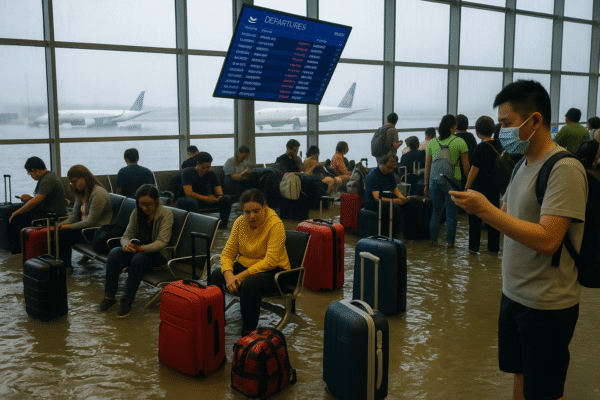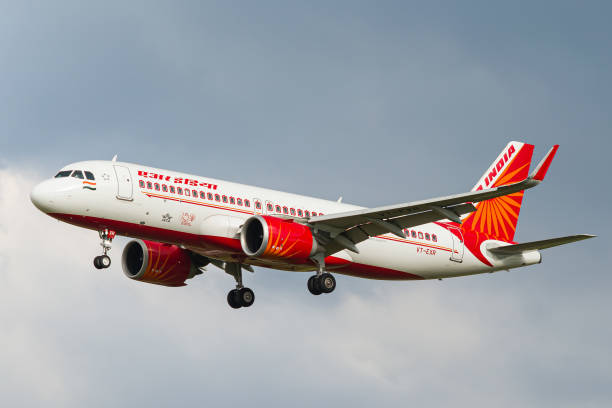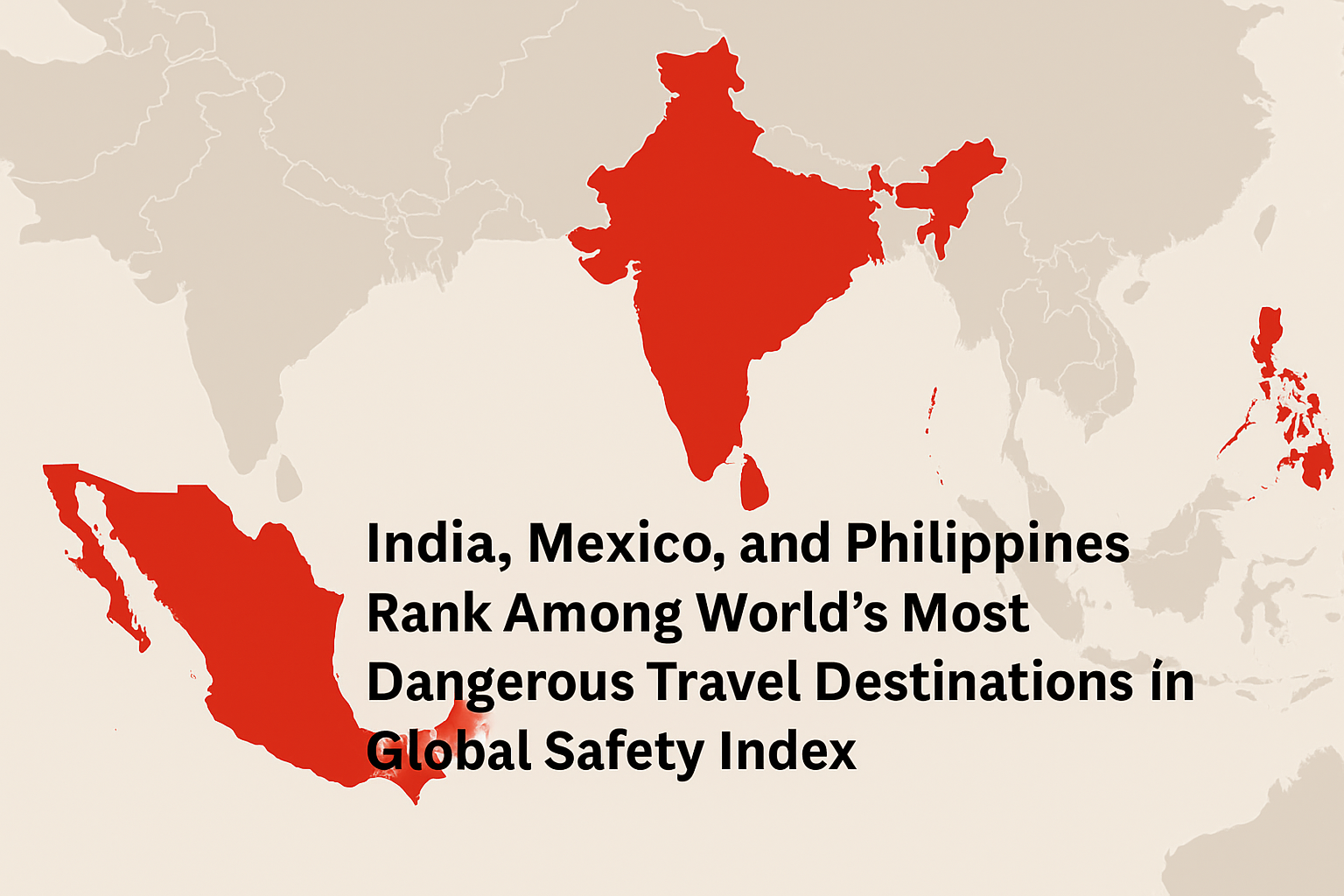India’s flagship carrier Air India is under increasing scrutiny as a surge in technical issues, last-minute cancellations, and emergency landings has led to widespread passenger panic and brand damage. Over the past week, a string of troubling incidents has gripped the airline, raising critical concerns over safety, maintenance, and communication practices.
From emergency landings in Thailand to cancelled flights in Delhi, travelers have been subjected to distressing mid-air situations, failed aircraft systems, and poor customer support. These developments are not only impacting thousands of passengers but also drawing negative attention to the reliability of India’s civil aviation sector.
Bomb Threat on Phuket–Delhi Flight Triggers Mid-Air Emergency
On June 13, an Air India flight from Phuket to Delhi was forced to make an emergency landing in Thailand after receiving a bomb threat mid-flight. The aircraft was promptly diverted, and security protocols were activated upon landing. All passengers were safely evacuated while Thai authorities conducted a full security sweep of the aircraft. Although the threat turned out to be a false alarm, the incident caused widespread panic among passengers and exposed vulnerabilities in inflight threat management.
Jaipur–Dubai Flight: No Air Conditioning in 40°C Heat
In another shocking incident, passengers aboard the Jaipur to Dubai route endured a sweltering journey when the air conditioning system failed mid-flight. A viral video circulating online shows visibly distressed passengers sweating, fanning themselves, and pleading for assistance. The footage has since sparked outrage on social media, highlighting growing concerns over Air India’s onboard service reliability.
Hong Kong–Delhi Flight Diverts Back Mid-Flight Due to Technical Snag
On June 16, a Boeing 787 Dreamliner operating from Hong Kong to Delhi was forced to return to Hong Kong mid-air after encountering unspecified technical issues. Passengers experienced lengthy delays, disrupted plans, and little clarity on when they would resume their journey. The incident once again emphasized the need for enhanced pre-flight inspections and real-time maintenance diagnostics.
San Francisco–Mumbai Flight Unexpectedly Stops in Kolkata
The situation worsened on June 17, when a San Francisco to Mumbai long-haul flight made an unexpected stopover in Kolkata due to another technical snag. Passengers were asked to deplane and remained in limbo for hours without clear communication from airline staff. The unanticipated layover added to the growing list of passenger frustrations and service inconsistencies.
Last-Minute Melbourne Flight Cancellation Adds Fuel to the Fire
Perhaps the most chaotic of all was the abrupt cancellation of flight A1308 from Delhi to Melbourne, which occurred minutes before its 1:15 AM departure. Hundreds of passengers were stranded in the airport terminal with no explanation, no rebooking options, and minimal assistance. Many travelers took to social media to express their anger at the airline’s poor crisis management and communication failure.
Why Are These Incidents Increasing?
Following a 2024 air crash linked to technical malfunction, Air India has reportedly implemented stricter aircraft inspections and safety protocols. While such precautions are commendable, aviation experts say that increased technical checks without corresponding improvements in customer communication and crisis preparedness are leading to delays, cancellations, and rising passenger anxiety.
“Safety must come first, but the process must be transparent. Passengers need clear updates. The lack of consistent communication is damaging confidence in Air India,” said aviation analyst Rahul Malhotra.
Industry-Wide Ramifications for Indian Aviation
These recurring incidents could have long-term effects on international tourism. As foreign travelers begin to question the safety of flying with Indian carriers, India’s reputation as a global travel hub may be affected, particularly ahead of major events and festivals that usually attract tourists.
Competitors such as IndiGo, Vistara, Emirates, and Qatar Airways may benefit from Air India’s misfortunes, luring away high-value international travelers in search of greater reliability and customer-centric service.
What Passengers Can Do: Practical Travel Tips
For travelers flying with Air India or any carrier experiencing turbulence—literal or operational—experts recommend the following:
- Monitor flights in real-time via airline apps or flight trackers.
- Arrive early at the airport to allow time for any procedural delays.
- Carry travel insurance that covers flight cancellations, delays, and accommodations.
- Stay in contact with airline representatives and retain digital copies of itineraries, tickets, and updates.
- Have backup travel options ready, especially for international connections or multi-leg journeys.
The Road Ahead: What Air India Must Address
To regain passenger trust and restore operational integrity, Air India must urgently focus on:
- Fleet modernization: Retiring older aircraft and enhancing maintenance routines.
- Customer service training: Equipping staff to handle disruptions with clarity and empathy.
- Proactive communication: Leveraging mobile alerts, gate agents, and email to keep passengers informed.
- Crisis management protocols: Creating reliable rebooking systems and offering real-time compensation updates.
Conclusion: Time for Transparency, Safety, and Rebuilding Trust
Air India’s string of recent technical snags, emergency landings, and cancellations paints a troubling picture of an airline in dire need of structural reform and cultural shift. While safety protocols have improved, the passenger experience continues to deteriorate due to communication failures and unpredictability.
India’s aviation sector is globally watched—and the national carrier must lead by example. As global competition intensifies, restoring faith through transparent, efficient, and empathetic service delivery is no longer optional—it’s essential.
For more travel news like this, keep reading Global Travel Wire

















